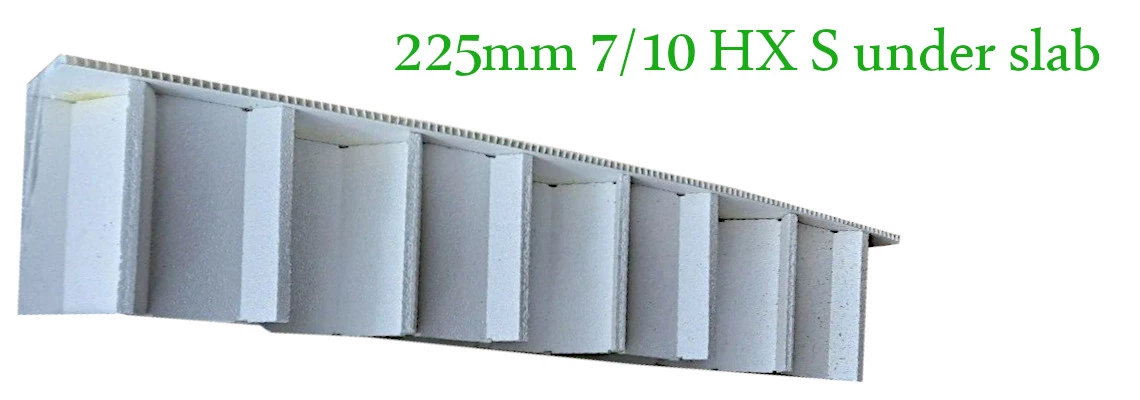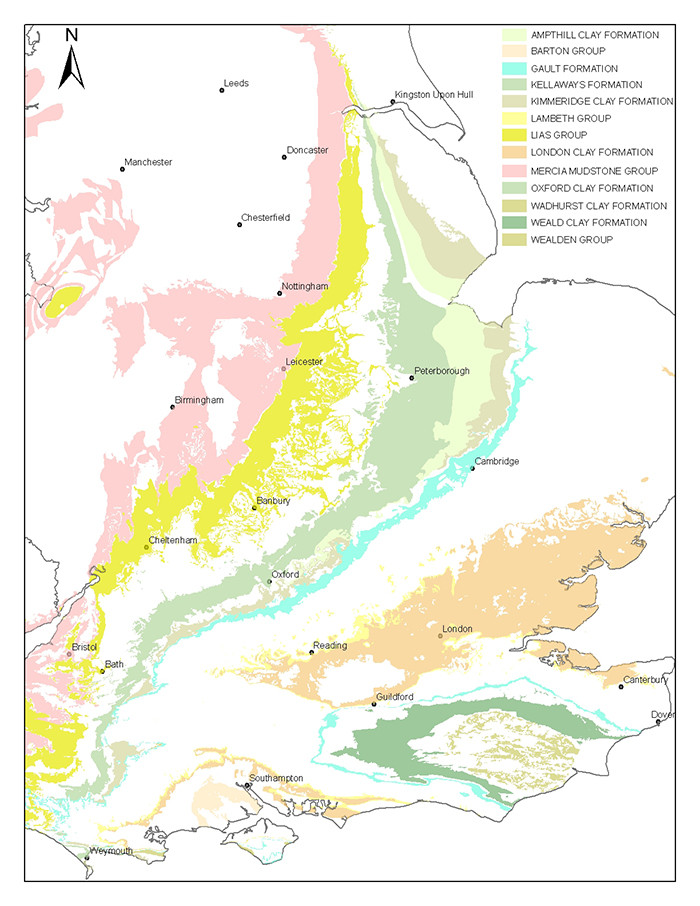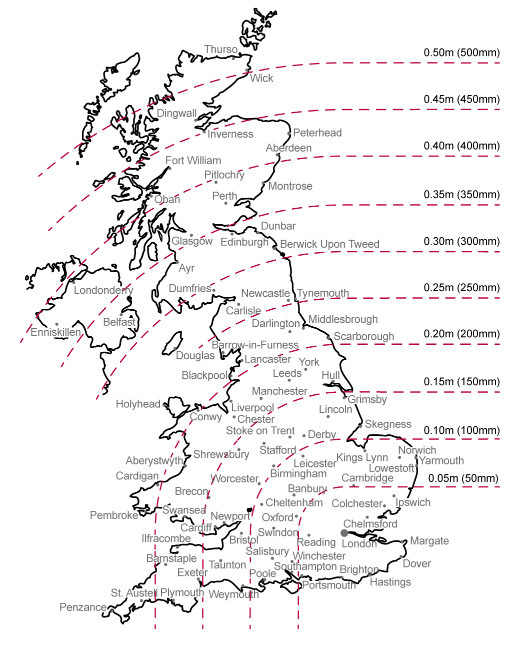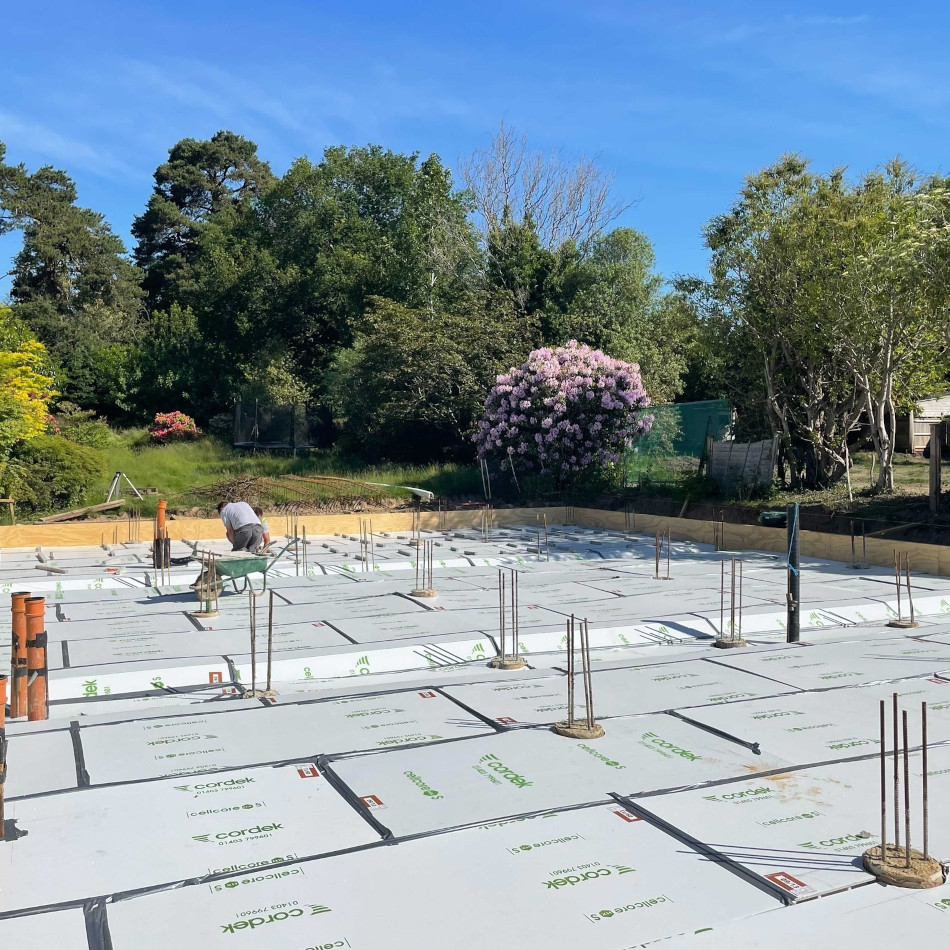
THE PREFERRED CHOICE – EXPLORING THE 225MM CELLCORE 7/10 GRADE*
In regions characterised by shrinkable soils, the design of foundations plays a critical role in ensuring load distribution while minimising excessive ground movement. It's imperative that foundations, substructures, and services are meticulously planned to counteract potential movements resulting from ground heave. When considering scenarios where heave might impact foundations and substructures, the incorporation of voids, void formers, or compressible materials, such as the Cellcore 225mm HX S, becomes essential for protection.
Within the context of this blog, we embark on an exploration of the primary reasons behind the widespread selection of Cordek's void former product as a paramount solution for safeguarding structures. Furthermore, we delve into the rationale behind the prevalent preference for the 225mm dimension over alternatives.
Picture credit: directpiling.co.uk
225MM CELLCORE 7/10 GRADE POPULARITY
When it comes to the anti heave void former, more commonly purchased and used material for creating voids in areas with high clay concentration is the 225mm Cellcore HX S 7/10 grade. Its popularity arises from the necessity to ensure the optimal 225mm dimension, addressing the movements caused by trees, hedgerows and shrubs drawing moisture from the soil. These movements, prevalent in cohesive soils like clay, can bring about significant volumetric changes, resulting in soil displacement.
The depth of 225mm is dependent on the anticipated heave amount (potential ground movement) and should be determined based on the soil's heave potential (NHBC shrinkage category). The 225mm dimension belongs to the highest group within the range of 40-60, making it the most secure choice for usage.

Picture credit:nzgs.org
225MM CELLCORE 7/10 GRADE vs PLASTICITY INDEX
Voids should be provided to accommodate movement due to heave forces acting against foundations. There are three potential soil plasticity indexes for volume:
10% to less than 20%: Low
20% to less than 40%: Medium
40% and greater: High
The Plasticity Index (PI) is a measure used to assess the plasticity of a soil. It indicates the range of moisture content within which the soil can be moulded and shaped without cracking. It's often used in geotechnical engineering to classify and characterise the behaviour of soils, particularly clayey soils, in terms of their ability to change shape under different moisture conditions. Soils with higher Plasticity Index values tend to exhibit greater plasticity and can undergo significant changes in volume and consistency when their moisture content varies.
The potential for volume change needs to be determined through thorough site investigation and reliable geological information specific to the area. A satisfactory number of samples must be collected to ensure the credibility and representativeness of the obtained results.
225MM CELLCORE DEPTH
The overwhelming majority of land in the UK, as indicated by the British Geological Survey, consists of areas where clay is prevalent. As widely recognized, clay poses a primary threat to building foundations, and its movements can lead to wall cracks and building subsidence. Hence, it is crucial to employ an appropriate compressible material, often referred to as an "anti-heave board," to counteract these effects.

Picture credit:bgs.ac.uk
This material contracts as clay expands. To rephrase, the void dimension indicates the degree to which the material should be capable of compression to accommodate ground heave. Typically, the compressible material's required thickness is approximately double the void dimension. For instance, if a void dimension of 110mm is necessary, the suitable dimension for the compressible material would be 225mm. Considering that a significant number of buildings are constructed in London, where the Plasticity Index is at its highest (40-60%), the utilisation of anti-heave boards designed for this specific purpose becomes nearly essential. One of the products tailored for this Plasticity Index range is precisely the Cellcore 225mm HX S.
225mm CELLCORE 7/10 GRADE. THE MOST COMMONLY USED OPTION.
The Cellcore 225mm is available in various grades, with 7/10 being the lowest grade option. This grade determines and informs us about the thickness of concrete it can withstand without deforming. According to Cordek specifications, grade 7/10 can handle 220mm of concrete. This is quite substantial, considering that the minimum concrete thickness for underfloor heating is typically around 50-70mm. However, the 220mm of concrete is calculated to support heavier loads as it serves as an under slab, forming the structural floor of the building.
Taking into account the high costs of concrete and the associated transportation expenses, grade 7/10 proves to be the most optimal choice. Especially in scenarios where they are often utilised, such as in garage construction, or house extensions, the choice of grade 7/10 remains highly optimal.

Picture credit:cordek.co.uk
225MM CELLCORE 7/10 GRADE vs TREE
Increased precipitation helps alleviate moisture imbalances originating from trees and hedgerows, while cooler, damp weather moderates the pace of water evaporation from trees, thereby mitigating the potential for soil displacement.
The driest and warmest regions in the UK are typically found in southeastern England. Consequently, the highest risk is concentrated in this area and gradually lessens when moving towards the north and west. A reduction of 50mm in foundation depth, as calculated following the guidelines of this section, can be implemented for every 50 miles farther north and west from London. In cases of uncertainty regarding the applicable zone, the smaller reduction value should be employed.

Picture credit:nhbc-standards.co.uk
CONCLUSION
In conclusion, the selection of building materials and techniques holds paramount significance when it comes to addressing the challenges posed by shrinkable soils and ground movement. The Cellcore 225mm HX S, with its exceptional compressibility and capacity to accommodate heave, emerges as a clear frontrunner in safeguarding structures against the detrimental effects of soil expansion.
Related articles:
Foundation heave problems. Heave Symptoms
Protect your home against clay soil
Understanding Dufalite Honeycomb Claybord Void Former
Filcor lightweight structural fill
Differences beetween HX S and HX Plus
*All the information provided in the content published on Insulationgo blog is for informational and educational purposes only. Insulationgo LTD makes every effort to ensure the accuracy and timeliness of the content, but we do not assume any responsibility for any errors or omissions.
The information presented on this blog should not be considered as professional advice or a substitute for consulting relevant experts. Before making any purchase decisions or taking action based on the information presented here, it is strongly recommended to contact the product manufacturer directly to verify the details and ensure its suitability for your specific needs.
By using this blog, you acknowledge and agree that Insulationgo LTD shall not be held liable for any damages, losses, or inconveniences arising from the use or reliance on the information provided herein. This limitation of liability applies to all users of the blog, including but not limited to visitors, readers, and subscribers.











































































































